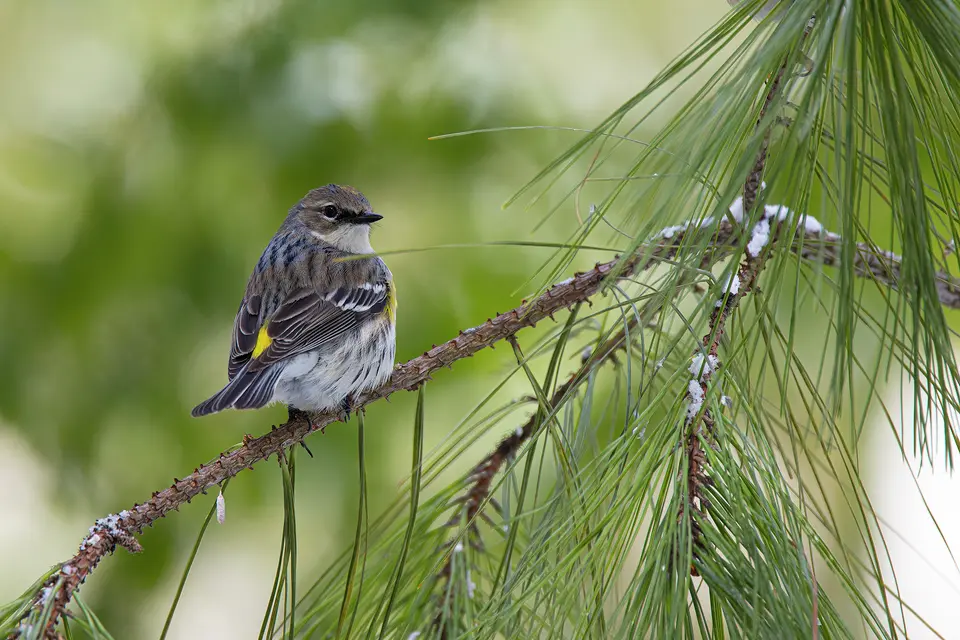Its telltale derrière is key to identifying the yellow-rumped warbler, a winter visitor to Houston
By Gary Clark,CorrespondentDec 14, 2023


Yellow-rumped warblers are named for their yellow rump that is revealed as they flit from one spot to the next. Photo Credit: Kathy Adams Clark. Restricted use.Kathy Adams Clark/Kathy Adams Clark/KAC Productions
You're likely to soon see groups of nondescript songbirds showing up in your backyard, in local woodland parks, or in nearby state parks.
Keep an eye on the birds and look for a yellow patch on the rump, which gives away their identification as yellow-rumped warblers. The birds migrate here for the winter from breeding grounds in coniferous forests across the northern tier of the U.S. and Canada.
Their brownish-gray winter plumage is hardly eye-catching, but those flashes of color on the bird's namesake yellow rump may catch your eye as they flit from one spot to the next. Their upper sides may also reveal a tinge of yellow peeking out at the bend of the wing.
They typically feast on insects, plucking them off tree twigs, bark and bushes. The birds also dine on wild fruits such as berries on wax myrtles, juniper trees and poison ivy. The energetic birds constantly forage while flashing their yellow rumps, which led birders to nickname them “butterbutts.”
I grew up calling the birds that arrive in our area “myrtle warblers,” the name deriving from their appetite for myrtle berries. But I suppose the birds arriving in West Texas were called “Audubon’s warblers” for lack of a more imaginative name.
Yellow-rumped warblers
- Yellow-rumped warblers migrate here from breeding grounds mostly in Canada and the northeastern U.S.
- They breed in North American coniferous forests, including areas with a mix of coniferous and deciduous trees.
- Prior to migrating, the birds eat voraciously and gain excess body fat to energize their long flight south.
- Large numbers usually migrate to the Houston region for the winter and become abundant backyard birds in local neighborhoods.
- Some birds migrate south of the border as far as Costa Rica and Panama.
- A unique gastrointestinal system allows the birds to digest the wax-encased berries of wax myrtles, hence their original “myrtle warbler” name.
Researchers eventually discovered that the two birds interbreed along a zone 80 miles wide in western Canada. Hence, their conclusion in 1973 was that myrtle and Audubon’s warblers were the same species, which is why both birds were renamed yellow-rumped warblers.
Ah, but the jury may still be out on that unifying name. Recent DNA studies show that birds breeding in the West are indeed a separate species from those breeding in the East. Two other yellow-rumped warblers breeding south of the border were also deemed different species.
houstonchronicle.com |






